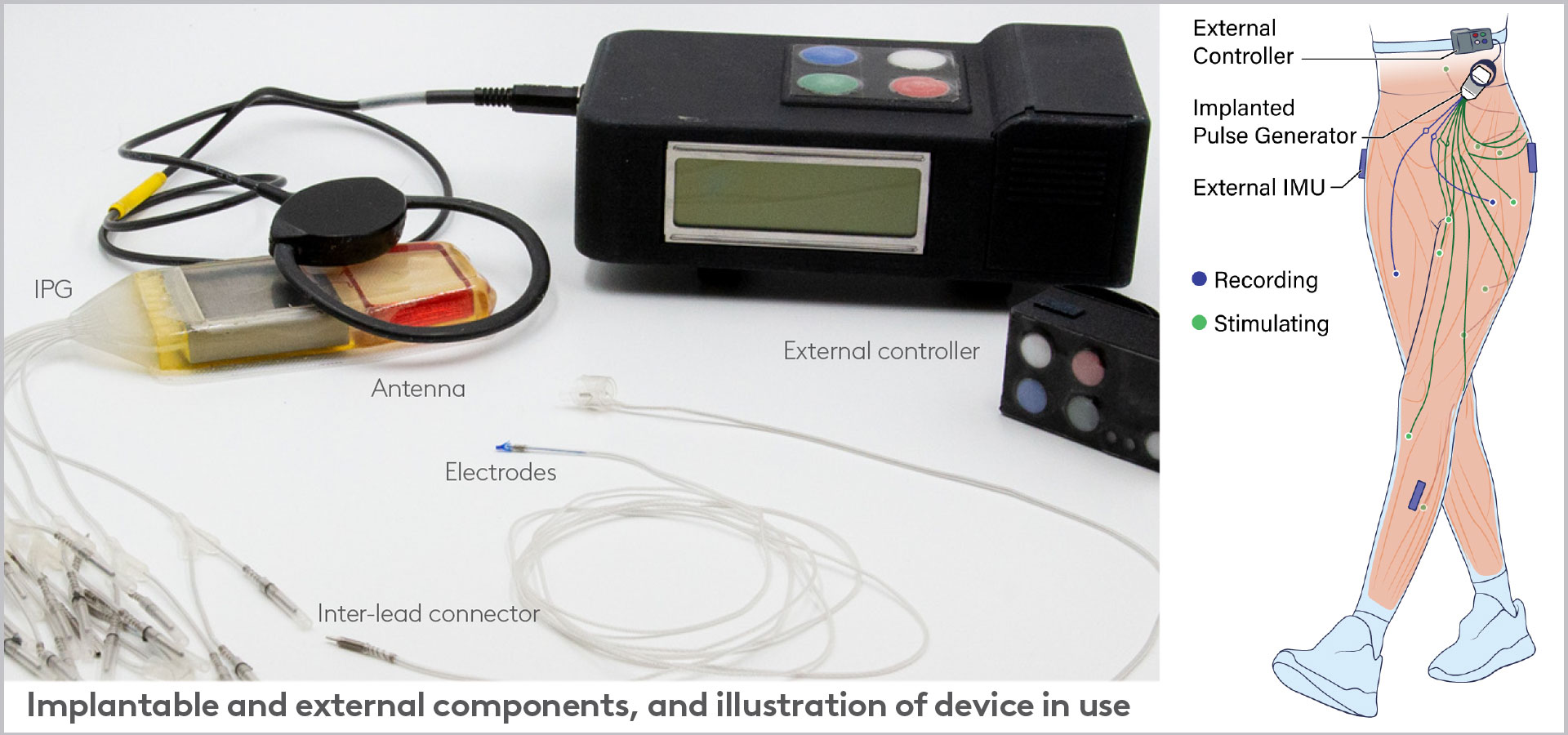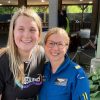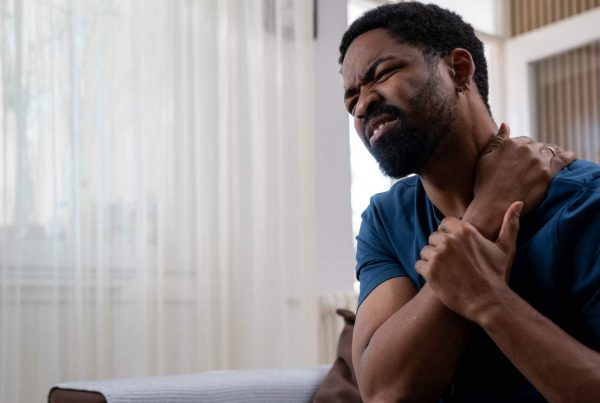Contributed by Nathan Makowski, PhD | MetroHealth Rehabilitation Institute
After a stroke, rehabilitation focuses on getting back to daily life, particularly for people who have lost significant movement and function. MetroHealth’s Nathan Makowski, PhD, a staff scientist in the MetroHealth Center for Rehabilitation Research and the Department of Physical Medicine and Rehabilitation (PM&R), has been working on an assistive device to help stroke survivors make functional gains and restore mobility and independence after stroke.
Dr. Makowski’s team is studying the use of an implanted stimulation system to activate muscles affected by a stroke. The system consists of both implantable and external components. Implanted components include an electrical stimulator and electrodes that activate muscles acting at the hip, knee and ankle. External components include the external controller that is operated by the research participant.
“The goal is for the assistive device to coordinate electrical stimulation to muscle groups based on the activity the user is engaging in,“ says Dr. Makowski, who is an Assistant Professor of PM&R at the Case Western Reserve University (CWRU) School of Medicine. “For example, as someone begins a step, the system helps bring the leg forward while the foot clears the ground, and then it prepares the leg to support the foot and propel the limb forward in stance.”
Dr. Makowski says they have implanted the system into one individual in the study and are preparing for the second implant. At the beginning of the process, the latest research participant took short steps with his foot barely clearing the floor. With the system, he can now take longer steps with better toe clearance.
“Beyond walking, the system can assist with movements required for taking the stairs. In addition to potentially improving walking for people who are already able to take steps, it may facilitate standing and stepping for people who are more impaired as well and need help to stand and take a couple of steps.”
How It Works
- After the system is implanted and the incisions heal, the participant comes in and the system is turned on and tuned to activate muscles in useful patterns during tasks.
- As the participant engages in certain activities, they push a button on the external controller to activate pre-programmed patterns of stimulation to activate muscles based on their mobility goals. Activities could include:
- Stand
- Ready to walk
- Exercise
- Stairs
- The external controller tells the implant to provide patterns of stimulation to the muscles based on sensors worn on the user’s body.
Next Steps
Dr. Makowski says the system—which was developed in Cleveland—was first used in people with spinal cord injury (SCI).
“The systems have enabled trunk control, standing and stepping in people with SCI. Stroke survivors with significant paralysis may also benefit from activating muscles in the same way,” he says.
The team is continuing to study the impact of the intervention.
In addition to Dr. Makowski, the research team includes:
- Ronald Triolo, PhD, staff scientist, Department of Orthopedics at MetroHealth and Professor of BME at CWRU
- Musa Audu, PhD, Research Professor of Biomedical Engineering (BME) at CWRU
- Gilles Pinault, MD, vascular surgeon at Louis Stokes Cleveland Veterans Affairs Medical Center and Assistant Professor of Surgery at CWRU
- Stephen Selkirk, MD, PhD, Neurology physician at Louis Stokes Cleveland Veterans Affairs Medical Center and Assistant Professor of Neurology at CWRU
- Richard Wilson, MD, PM&R physician at MetroHealth and Professor of PM&R at CWRU
- Harry Hoyen, MD, orthopaedic surgeon at MetroHealth and Professor of Orthopedics at CWRU
- Douglas Gunzler, PhD, researcher, Department of Medicine at MetroHealth and Associate Professor of Medicine at CWRU
- Debbie Espy, PhD, Assistant Professor of Physical Therapy, Cleveland State University












